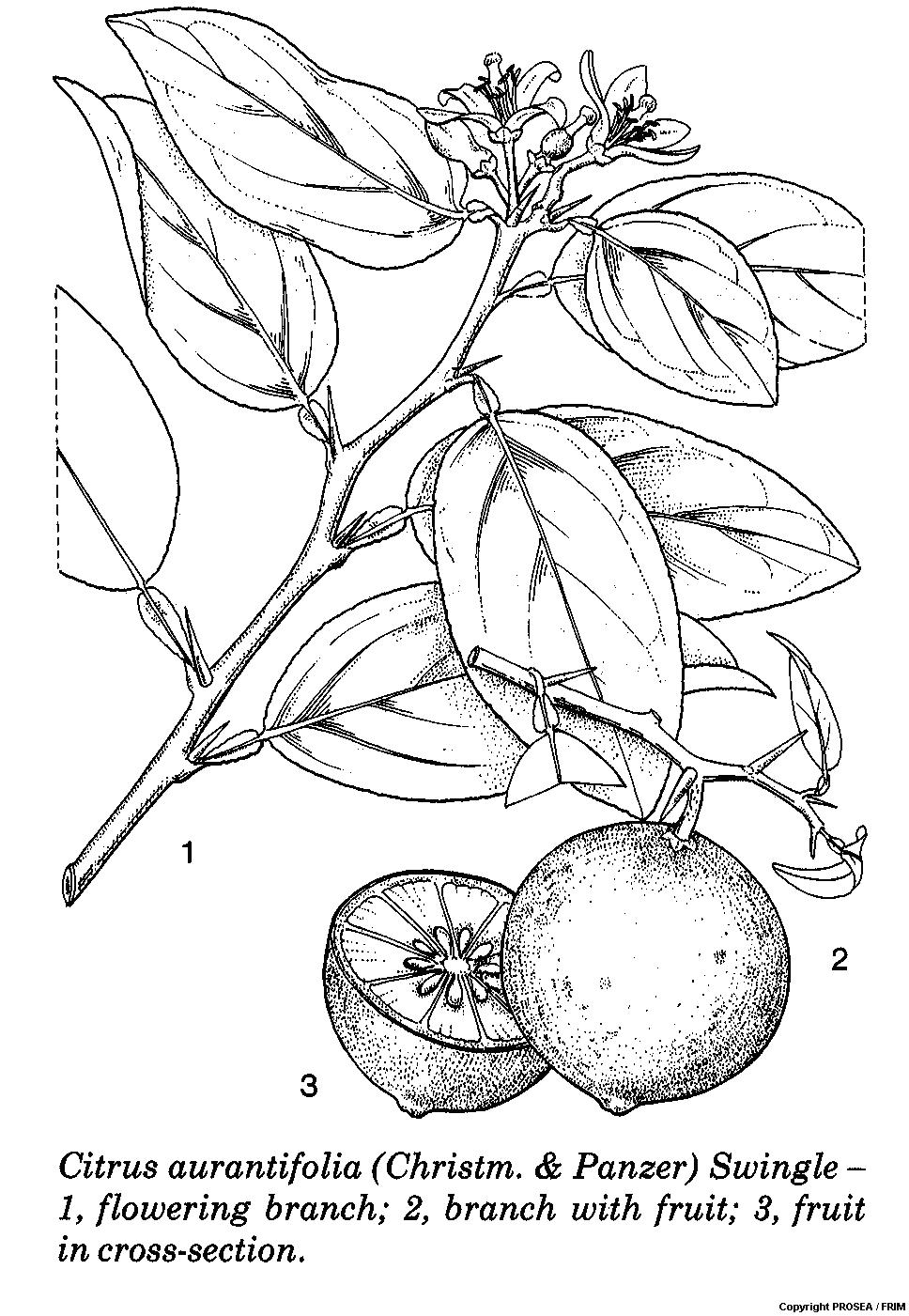Citrus aurantifolia (Christm. & Panzer)
Family
Rutaceae
Synonyms
Limonia aurantifolia Christm. & Panzer, Citrus javanica Blume, Citrus notissima Blanco.
Vernacular Names
|
Malaysia |
Limau asam, limau nipis. |
|
English |
Lime, sour lime, common lime. |
|
Indonesia |
Jeruk nipis, jeruk pecel. |
|
Papua New Guinea |
Muli (Pidgin). |
|
Philippines |
Dayap. |
|
Cambodia |
Krôôch chhmaa muul. |
|
Laos |
Naaw. |
|
Thailand |
Somma nao, manao. |
|
Vietnam |
Chanh, chanh ta. |
|
French |
Lime acide, limettier. |
Geographical Distributions
Citrus aurantifolia is believed to have originated in northern India and adjoining parts of Burma, or in northern Malesia. Amazingly, there are no records of wild lime in Thailand. It is now cultivated throughout the tropics and in warm subtropical areas.
Description
Citrus aurantifolia is an evergreen small tree, densely and irregularly branched. It is about 5 m tall. The twigs are armed with short stiff sharp spines.
The leaves are arranged alternate, elliptic to oblong-egg-shaped, and measuring 4-8 cm x 2-5 cm. Their margin is slightly crenate.The leaf stalk is narrowly winged.
The inflorescences are short axillary racemes with 1-7(-10) flowers. The flowers are small and white in bud. The sepal is cup-shaped and 4-6-lobed while there are 4-6 petals measuring 8-12 mm long. There are 20-25(-34) stamens and a 9-12(-15)-celled ovary with abruptly distinct style.
The fruit is a spherical to ovoid berry, measures 3-6 cm in diametre, sometimes with apical papillae and greenish-yellow. Its peel is very thin and densely glandular. The segments are with yellow-green pulp-vesicles, very acidic, juicy and fragrant.
The seeds are small, plump, ovoid, pale and smooth with white embryos (polyembryonic).
Ecology / Cultivation
Citrus aurantifolia can grow up to 1000 m altitude or more. The tree is sensitive to cold but is quite drought-resistant. High incidence of bacterial canker is a limiting factor in the wet tropics; under dry conditions, irrigation is necessary to obtain good quality fruits. It can grow on poor soils and tolerate heavier soils than oranges, provided that good drainage prevents waterlogging.
Line Drawing / Photograph
Read more
1) Cultivation
2) Safety
References
- Plant Resources of South-East Asia No.2: Edible fruits and nuts.



